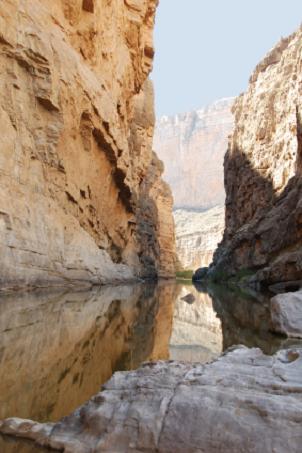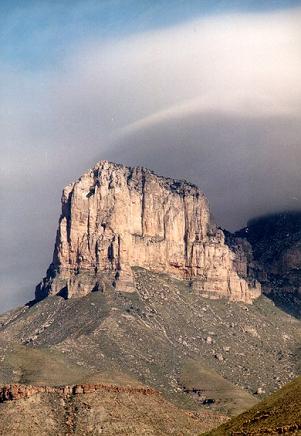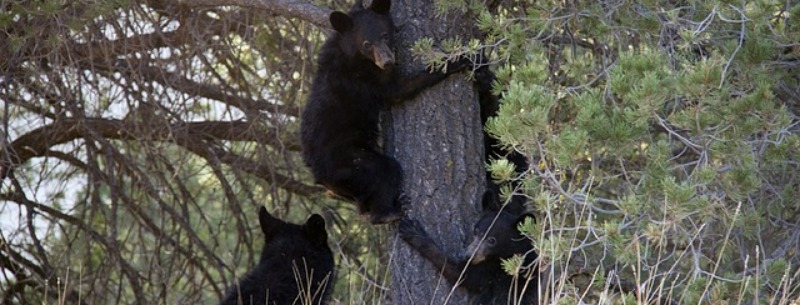Big Bend National Park, Texas
Big Bend National Park contains 1,100 square miles of some of the most beautiful areas in Texas. The Rio Grande, flowing through 150 ft gorges, makes a ninety-degree turn south of Marathon to form the southern border of this park. Thanks to its isolation, it is one of the least visited national parks, and very much of a kind with the great desert parks of the Southwest.

Sometimes considered “three parks in one,” Big Bend includes mountain, desert, and river environments. Once in the park, unless you’re prepared to do some strenuous hiking, there are few opportunities to see the river itself. A road starting west of the headquarters at Panther Junction leads south for six miles, up into the alpine meadows of the Chisos Basin, ringed by dramatic peaks. Driving south of Panther Junction brings you to Rio Grande Village, where you can bathe in natural hot springs.
At three separate places in the park, the river runs through gigantic canyons. The westernmost, the Santa Elena, is the most common rafting trip, being accessible from Lajitas. It boasts the technically challenging Rock Slide, and two Mexican side canyons that can be hiked, as well as stretches where the river swirls between awesome high rock walls.
The ease of crossing the international border adds to the thrill of this park, although you can get no further into Mexico than sandbanks. This area is so remote that casual traffic across the river is regarded as insignificant.
Big Bend is located in southern Texas. For 244 miles along the Rio Grande, Big Bend forms the international boundary between Mexico and the United States.
Big Bend has national significance as the largest protected area of Chihuahuan Desert topography and ecology in the United States, which includes more than 1,200 species of plants, more than 450 species of birds, 56 species of reptiles, and 75 species of mammals. Few areas exceed the park’s value for the protection and study of geologic and paleontologic resources.
But there’s more to Texas National Parks – Big Bend than just history. You’ll be amazed by the number of great family activities that are available at this great Texas national park!
Big Bend Must-See Places
Big Bend is named for the vast curve of the Rio Grande in remote southwest Texas. It is a wildly beautiful natural region, with a complex and fascinating history. Over one million acres of public land including Big Bend National Park and Big Bend Ranch State Park offer hiking, camping, river running, horse riding, mountain bicycling, jeep touring and abundant sightseeing opportunities on paved and improved roads. Accommodations run the range from convenient and comfortable to resort luxury.
Big Bend Camping
The Big Bend area can accommodate every camping style, from full hook-up RV units to remote backcountry campsites and everything in between. The weather is usually great, there are few insects, and there is plenty of peace and quiet. Many campers just sleep on the ground under the stars.
Big Bend Lodging
Terlingua Business District and Study Butte are small communities clustered near the Junction of Highways TX 118 and FM170 a few miles from the western entrance of Big Bend. There are several comfortable accommodations very convenient to the western entrance of Big Bend.
Guadalupe Mountains National Park, Texas
Roughly one hundred miles east of El Paso, Highway 62/180 climbs toward Carlsbad Caverns along the southern fringes of the Guadalupe Mountains, once a stronghold of the Mescalero Apache. Guadalupe Mountains National Park contains the southern end of the Guadalupe Mountains, an isolated range surrounded in all directions by the desert. Guadalupe is known for its varied wildlife, interesting geology, and photogenic views.

The national park is very much a hiking and camping destination, barely penetrated by roads and without accommodation, food or even gas. It is possible to hike right to the top of Guadalupe Peak, at 8749 ft the highest point in Texas, but most walkers head for the painlessly flat trek through McKittrick Canyon, passing from the bare desert into lush mountain forests beside sheer canyon walls. Hiking in Guadalupe is a great way to both see and experience the park. Self-guided nature trails are located at Pine Springs and Dog Canyon.
The park has a climate typical of colder regions, with pine, fir and aspen trees. The creatures which roam here include elk, mountain lions, and black bears. Surrounding the mountains lie the plains of the Chihuahuan Desert, where several species of cacti grow. The canyons of the park support a rich mixture of many kinds of trees, bushes, and wildlife.
A number of beautiful wildflowers bloom in early spring in McKittrick Canyon. Many, such as Lion Heart and Chapline Columbine are only found in this region and nowhere else because of its unique geography and climate.
National Parks in Texas
There are so many national parks in Texas, it is hard to imagine any non-national park areas. Another huge overstatement, but you get the idea.
The following list of national parks in Texas is arranged in a particular format. First, the parks are in alphabetical order. Second, general locations are listed, but keep in mind some parks move beyond the borders of Texas. Third, the type of national park is also listed.
Alibates Flint Quarries National Monument
Fritch, TX
National Monument
Amistad National Recreation Area
Del Rio, TX
National Recreation Area
Big Bend National Park
The big bend of the Rio Grande, TX
National Park
Big Thicket National Preserve
Beaumont, TX
National Preserve
Chamizal National Memorial
El Paso, TX
National Memorial
El Camino Real de Tierra Adentro National Historic Trail
NM, TX
National Historic Trail
Fort Davis National Historic Site
Fort Davis, TX
National Historic Site
Guadalupe Mountains National Park
Salt Flat, TX
National Park
